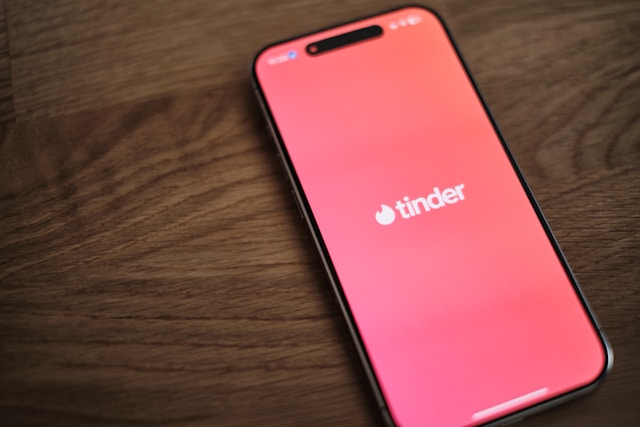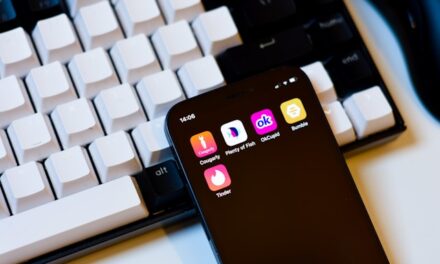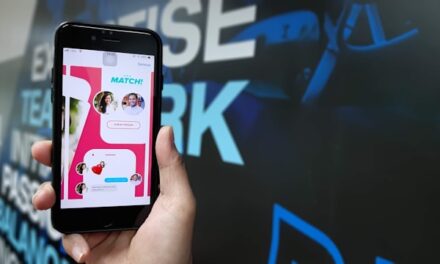This article will break down everything you need to know to build an app like Tinder successfully. You’ll learn how to define core features, design an intuitive UI, develop a smart matching system, and explore the cost to build a dating app. We’ll also discuss how to monetize your platform and why Scrile Connect offers the best development solution for launching a customized, high-performance dating app.
By the end, you’ll have a clear roadmap for creating a competitive dating app that delivers real connections and stands out in a crowded marketplace. Let’s get started.
Why Build a Dating App Like Tinder in 2025?
The online dating industry continues to grow, with projections estimating it will exceed $7 billion by 2027. More than 366 million people worldwide are using dating apps, making digital matchmaking a dominant force in modern relationships. With people increasingly relying on technology to find romantic connections, now is the perfect time to build a dating app like Tinder that stands out in this competitive market.
Even though it is true that tinder’s swipe approach revolutionized online dating, mimicking it in 2025 isn’t the answer. Mankind has evolved in various forms and needs further personalization, better security, and better matches instead of endless swiping. AI-driven matching apps, online dating on the base of video, and better verification processes stand out compared to other apps.
But building a successful dating site isn’t just about adding hip features. The industry faces key challenges, including market saturation, where users are overwhelmed with too many similar platforms, and low user retention, where people sign up but don’t stay engaged. Matchmaking algorithms also need to evolve, ensuring users receive high-quality matches instead of random swiping suggestions.
Market Research & Identifying Your Niche

Before you build a dating app like Tinder, you need to understand who your users are and what they expect from a dating platform. The dating app market is highly competitive, and launching a generic app without a clear audience will likely lead to failure. Thorough market research helps you identify gaps in the industry, analyze competitors, and create a platform that offers something unique.
Why Market Research Matters
Successful dating apps solve a specific problem or serve an underserved audience. By studying user behavior, demographics, and dating preferences, you can tailor your app to attract loyal, engaged users. Researching competitors allows you to see what works, what doesn’t, and where opportunities for innovation exist.
Popular Niche Dating Categories
- General Dating Apps. These apps, like Tinder and Bumble, have a wide appeal but face high competition. Breaking into this market requires strong branding, advanced AI-powered matchmaking, or a viral marketing strategy.
- Niche-Specific Dating Apps. Apps focused on shared interests—such as fitness lovers, pet owners, or professionals—tend to build strong communities. Examples include DateMyPet (for pet lovers) and EliteSingles (for high-achieving professionals).
- LGBTQ+ Dating Apps. Inclusive platforms like Grindr, Her, and Taimi cater to specific communities within the LGBTQ+ spectrum. These apps prioritize safety features, identity expression, and inclusive user experiences.
- Religious Dating Apps. Faith-based platforms like Christian Mingle, JSwipe (Jewish dating), and Muzmatch (Muslim dating) help people find partners who share their beliefs and values.
- Casual vs. Serious Dating. Some apps focus on long-term relationships (e.g., eHarmony, Hinge), while others are designed for casual dating or hookups (e.g., Pure, Feeld). Understanding your audience’s intent will shape your app’s branding and user experience.
Monetization Models of Competitors
To make sure your app is profitable, learn how profitable apps generate revenue. The cost of dating sites varies, but the majority of apps use one of the following models:
- Freemium Model – Basic features are free, but premium features (like unlimited swipes or message boosts) require payment (e.g., Tinder Gold, Bumble Boost).
- Subscription-Based – Users pay a monthly fee for full access (e.g., Match.com, eHarmony).
- In-App Purchases – One-time purchases for special features (e.g., Super Likes, profile boosts).
- Ad Revenue – Free apps can generate revenue by displaying ads.
By researching competitors and defining your niche, you can create a dating app that attracts the right audience and maximizes revenue potential.
Monetization Models of Competitors
To make sure your app is profitable, learn how profitable apps generate revenue. The cost of dating sites varies, but the majority of apps use one of the following models:
- Freemium Model – Basic features are free, but premium features (like unlimited swipes or message boosts) require payment (e.g., Tinder Gold, Bumble Boost).
- Subscription-Based – Users pay a monthly fee for full access (e.g., Match.com, eHarmony).
- In-App Purchases – One-time purchases for special features (e.g., Super Likes, profile boosts).
- Ad Revenue – Free apps can generate revenue by displaying ads.
By researching competitors and defining your niche, you can create a dating app that attracts the right audience and maximizes revenue potential.
Defining the Core Features of a Dating App
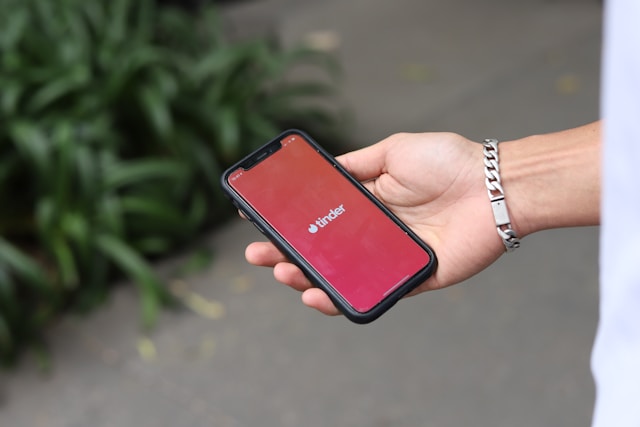
If you’re going to build a dating app like Tinder, it’s not just a matter of imitating its time-tested swipe-right, swipe-left interface. It’s not just that it’s so successful; it’s because it’s so instantaneous, so habituating, so engaging. From stripped-down profiles to seamless swiping to instant messaging, all aspects of its design make users come back again and again. To create an app that holds a candle to it, you have to understand what it does so well and perfect it.
User Profiles That Keep Things Simple
Tinder doesn’t overload users with lengthy questionnaires or complex personality tests. Instead, it relies on visually driven, concise profiles that let people decide quickly. A strong profile system should include:
- Multiple profile photos because attraction starts visually.
- A short bio—users rarely read more than a few lines.
- Interests & preferences, allowing simple profile tagging instead of long descriptions.
- Optional social media integration with Instagram or Spotify for a more dynamic profile.
The Swipe System: Why It Works So Well
Tinder’s swipe is addictive because it mimics social media’s instant gratification. Unlike having to fill out a long compatibility test, you get to start engaging immediately. It’s simple—right swipe when you’re interested, left swipe when you’re not. In order to build an app with the same appeal, you need a minimalist interface. The swipe action needs to be smooth, reactive, and provide gentle animations so engagement is high.
It’s not just enough anymore in 2025 to simply swipe. Adding compatibility scoring, AI-driven recommendations, or filtering by interests serves to elevate the match. Many users are tired of endlessly swiping without finding real connections, so smart matching features are a must.
Messaging That Feels Instant & Engaging
Once you’ve got a match on Tinder, it simplifies conversation. A decent conversation system has:
- Live text messaging to facilitate instantaneous communication amongst match-ups.
- GIFs, emojis, and images to make chats more enjoyable and expressive.
- Messages to users who enjoy quick, moment-to-moment communication.
- Video calls, which Tinder introduced to assist individuals in verifying their matches prior to meeting in person.
The hard part isn’t so much delivering these features but making them feel natural and fun, not forced. A proper messaging experience should leave users wanting to keep chatting instead of ghosting after the first message.
Location-Based Matching & AI Recommendations
Tinder’s location feature allows easy matching with people in proximity. It is easy to customize the proximity filter, depending on how far you want the other party to be, i.e., a few miles or within town. This makes the matches significant and within reach.
There is a future, however, to online dating apps, and it’s AI-driven matching. Rather than location and swipe, AI has the ability to examine user behavior, patterns in messaging, and preferences and suggest better-quality matches. And the better-quality suggestions, the longer users stick around on the app.
Safety & Verification Features
One of Tinder’s biggest weaknesses has been the rise of fake profiles and scams. To compete, a new dating app must prioritize security and user trust. Photo verification, ID checks, and automated scam detection can significantly reduce fake accounts. Reporting and blocking systems should be intuitive and allow users to feel safe while using the platform.
Push Notifications & Engagement Tricks
A great dating app keeps users coming back. Tinder does this through clever push notifications—reminders about missed matches, profile boosts, or limited-time offers for premium features. The trick is to keep engagement high without overwhelming users with spammy notifications.
The Gamification Effect: Why Tinder Feels Like a Game
Tinder swipe is fun because it is gratifying. Every match provides a user with a hit of dopamine, and then they wish to do it again. That is why gamification components like match streaks, profile boosts, and match percentages get addictive. There needs to be fun features in a new app that will hook the users up and get them interacting.
The key to building a Tinder-like app is not to replicate it but also to understand why its core features are so addictive. Speed, ease, and interactivity make users swipe continuously, and AI-driven matching and security features will drive future dating apps. To be distinctive in 2025, a new app should leapfrog over the basics—offering wiser matching, seamless chatting, and a daily reason to come back.
Understanding the Cost to Build a Dating App
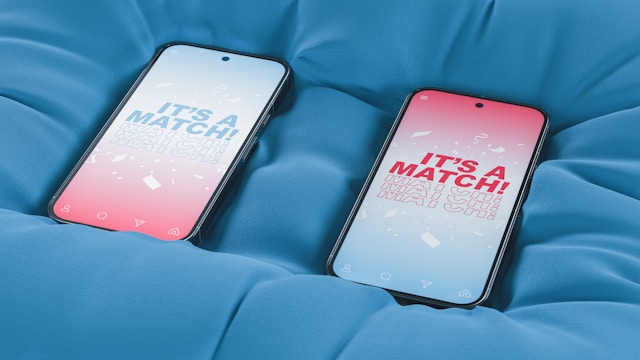
The cost to build a dating app like Tinder varies widely depending on factors like feature complexity, development approach, and third-party integrations. While a basic version can be developed on a smaller budget, a fully scalable app with AI-driven matchmaking, video calls, and premium features requires a much higher investment.
Breaking Down the Development Costs
A bare bones MVP with sign-up, profile creation, swiping, and light messaging is going to be in the range of $30,000 to $50,000. It is ideal for startups that need to test the waters with a functional, yet minimum functional, app before scaling with further features.
Yet, to match large brand name dating apps, you’re going to need to develop a full-featured app with AI-driven match-making, location filtering, video calls, and a user-friendly interface. Such an app runs anywhere from $80,000 to $150,000, with the higher end of that supporting complex analytics, live engagement options, and cloud scalability.
Third-Party Integrations and Additional Expenses
Beyond initial development, third-party APIs add extra costs. If your app includes location-based matching, services like Google Maps API require monthly usage fees. In-app messaging and voice calls may rely on Twilio, which charges per message or call. Payment processing through platforms like Stripe or PayPal also incurs transaction fees.
Security is another major cost factor. Dating apps must implement ID verification, AI-driven fraud detection, and encryption protocols to protect user data. These features are essential for user safety but require ongoing investment in monitoring and compliance updates.
Long-Term Maintenance and Growth Costs
Development is just the beginning—ongoing maintenance and updates are necessary to keep an app functional and competitive. Regular bug fixes, feature expansions, and security updates can cost thousands of dollars per month, depending on the size of the user base. Cloud hosting fees also increase with active users, requiring additional investment in servers.
If the app is successful, then marketing is another cost. Going up against the likes of Tinder and Bumble, user acquisition is something that will have to be accounted for, i.e. social media advertising, influencers, and referral rewards.
How Much Do Leading Dating Apps Spend?
To put things in perspective, major dating apps invest millions in development, maintenance, and marketing. Tinder, Bumble, and Hinge allocate significant resources toward algorithm improvements, premium feature rollouts, and user engagement strategies. Tinder alone generates $1.94 billion annually, which allows it to reinvest in product upgrades, machine learning algorithms, and AI-driven user recommendations.
While most startups won’t have the same level of funding, planning for sustainable growth and feature expansions is key to staying competitive. The cost to build an app like Tinder doesn’t stop at launch—it’s an ongoing process of innovation, optimization, and user engagement.
Technology Stack & Development Approaches

To build a dating app like Tinder, selecting the right technology stack is crucial. The tech stack affects performance, scalability, and development speed, so choosing the right combination of frontend, backend, and database technologies will impact the cost to build a dating app and its long-term stability.
Choosing the Right Tech Stack
The frontend determines how your app is being used by users. Cross-platform frameworks like Flutter and React Native allow you to share a single codebase for both Android and iOS, which is cost- and time-saving. Cross-platform frameworks are appropriate for creating MVP but will not be as fast as native apps.
For the backend, a strong foundation is necessary in order to enable user authentication, live chats, and matching of the profile. Node.js, Python, and Ruby on Rails are some of the technologies widely used in dating apps due to scalability and performance.
You require a robust database where user profiles, messages, and matches will be stored. Real-time syncing Firebase is a well-known choice, or MongoDB and PostgreSQL with dynamic data.
AI is reinventing dating apps so that match-making and user interaction is made more precise.Implementing machine learning models with TensorFlow or OpenAI allows the app to analyze user preferences, optimize swiping patterns, and predict compatibility more effectively.
Native vs. Hybrid Development
One major decision in development is choosing between native and hybrid approaches.
- Native app development (iOS’s Swift and Android’s Kotlin) provides maximum performance, smoother animations, and improved device optimization. It’s at the expense of duplicate codebases, however, which require additional time and money to write.
- Hybrid development (Flutter, React Native) is a cost-effective solution, enabling faster development with a shared codebase. However, performance limitations may affect complex features like real-time video calls and AI-driven matching.
Timeframe for Development
The time required to build an app like Tinder depends on feature complexity and development approach.
- An MVP (Minimum Viable Product) with basic swiping, profile creation, and messaging can take 4-6 months.
- A fully featured dating app with AI-based recommendations, video calling, and monetization models can take 8-12 months or longer, depending on customizations.
Selecting the right tech stack and development approach ensures that your dating app remains scalable, cost-effective, and competitive in the fast-evolving online dating market.
Monetization Strategies for a Dating App

Creating a dating app and monetizing it are two entirely different things. Although the success of Tinder, Bumble, and Hinge cannot be credited to their millions of users, it is just as much due to intelligent monetization strategies. If you want to build a dating app like Tinder that generates revenue involves one having to take the right pricing models, in-app purchases, and advertisement strategies.
Premium Subscriptions: What Works Best?
The biggest source of income for dating apps is subscription monetization. Membership for Tinder Plus, Gold, and Platinum includes unlimited swiping, profile elevate, and viewing those who like you.
- Tinder Plus: No advertisements, unlimited swiping is included, as well as a free monthly profile elevate.
- Tinder Gold: All the Plus features such as viewing who liked you prior to swiping are included.
- Tinder Platinum: Priority likes, message-before-matching, and all prior benefits.
Premium memberships usually cost between $10 and $30 monthly, and most will pay if they believe there is more likelihood of quicker matching. Having multiple levels enables individuals to select a level of commitment commensurate with their needs, which maximizes conversion rates.
In-App Purchases: Boosted Profiles and Super Likes
Although subscriptions give constant revenue, one-time payments are an excellent way to generate additional revenue from occasional users. Tinder, Bumble, and Hinge each offer microtransactions that give the user a benefit while matching.
- Boosted Profiles: Users pay for a temporary boost, and their profile comes at the beginning of another user’s swipe list.
- Super Likes: Paid add-on where the user is able to let a match know they are actually interested.
- Read Receipts: Allowing users to see if their messages have been read, adding another layer of interactivity.
They are purchases which are able to leverage user frustration and desire for instant gratification, hence becoming highly effective at generating revenue.
Freemium Model: The Balance Between Free and Paid
Freemium is the business model employed by most of the best-performing dating apps. The users are free to join, but they have access to some functionalities, such as unlimited swiping, powerful search features, or premium messaging features, only upon payment. This strategy ensures a large user base while still converting a percentage of users into paying customers.
By offering basic functionality at no cost, dating apps acquire a greater base of users, and fear of missing out (FOMO) pushes numerous to spend money on a better experience.
Advertisements & Brand Partnerships
While premium subscriptions and in-app purchases generate the most revenue, advertising partnerships provide another stream of income. Many dating apps integrate native ads, showing non-intrusive promotions inside the user interface.
Brands often collaborate with dating apps for seasonal campaigns, dating-related offers, or event promotions. Tinder, for example, has partnered with movie studios and travel companies, offering special deals based on user interactions.
The Psychology of Pricing: Why Users Pay for Dating Apps
Customers are okay with paying for dating apps if they believe it increases their success rate. Scarcity and urgency factors, along with gamification, encourage individuals to invest in being successful at dating.
- Scarcity & Urgency: Enrollment is higher when there is a short-term deal of premium subscription.
- Social Proof: Showing success stories results in higher conversions.
- Customization: Enabling the user to design his/her own unique experience with premium features makes the user feel self-sufficient.
Through subscriptions, in-app purchases, and ads, a dating app can make as much money as it can while still providing a great experience. The right monetization strategy is what makes a dating app a profitable business.
Scrile Connect: The Best Development Solution for Your Dating App
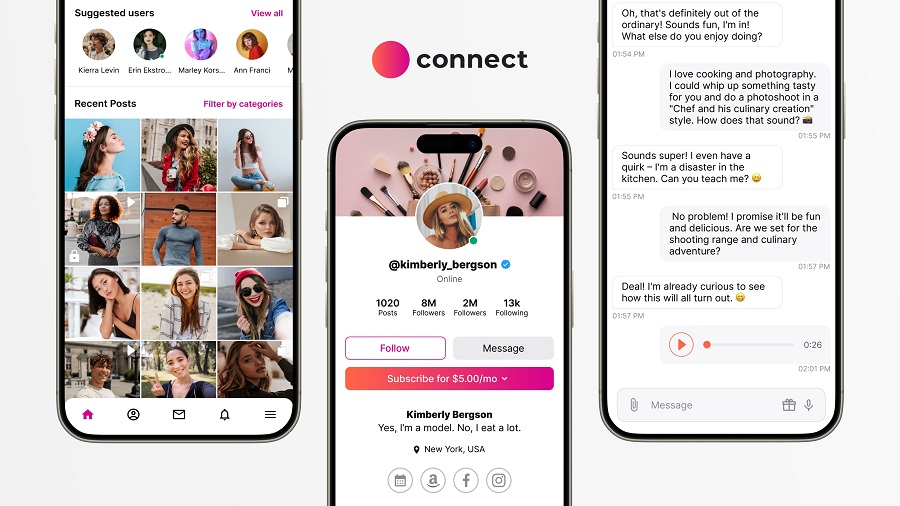
Building a dating app from scratch requires more than just a great idea—it demands a reliable tech infrastructure, scalable backend, and advanced matchmaking features to compete in an increasingly crowded market. Many businesses struggle with slow development times, high costs, and the limitations of generic app builders. This is where Scrile Connect offers a superior alternative, providing custom-built solutions for dating platforms that go beyond one-size-fits-all templates.
Why Scrile Connect is the Ideal Choice for Dating App Development
Scrile Connect specializes in end-to-end development, offering a fully customizable platform designed for modern dating businesses. Unlike DIY app builders that restrict flexibility, Scrile Connect allows businesses to develop a unique and engaging dating experience while maintaining full control over branding, features, and monetization models.
One of the biggest advantages of Scrile Connect is its customizable UI/UX design, tailored for specific dating niches. Whether you’re building a general dating app, an exclusive matchmaking platform, or a speed dating site, Scrile Connect ensures that your interface is intuitive, user-friendly, and optimized for engagement.
Beyond aesthetics, Scrile Connect provides pre-built core functionalities, eliminating the need to develop essential features from scratch. This includes:
- Profile creation and management, allowing users to create detailed profiles with photos and preferences.
- Matchmaking logic, using AI-powered algorithms to suggest compatible users.
- Chat systems and messaging tools, ensuring seamless communication.
- Secure payment processing, for premium subscriptions and in-app purchases.
Scalable Backend and Security-First Approach
Handling high user volumes requires a robust and scalable backend, something that Scrile Connect is designed to support. As your app grows, the platform can easily handle increased traffic, database expansion, and real-time interactions, ensuring a smooth user experience even under heavy loads.
Security is another major concern for dating apps, with increasing risks of data breaches, fake profiles, and fraud. Scrile Connect ensures GDPR compliance, encrypted user data, and AI-driven fraud detection, providing a safe and trustworthy platform for users.
Why Choose Scrile Connect Over DIY App Builders?
Many startups attempt to develop dating apps using generic app-building tools, only to realize that these platforms lack the customization, scalability, and security required to succeed. Scrile Connect offers:
- Faster deployment, with a development team experienced in dating app solutions.
- Flexibility, allowing businesses to customize features rather than relying on pre-set templates.
- Ongoing technical support, ensuring your app stays competitive with continuous updates and new feature integrations.
With Scrile Connect, businesses can skip the limitations of traditional app builders and launch a fully customized, high-performance dating platform faster than ever. Whether you’re creating a Tinder-style app, a niche matchmaking service, or a hybrid online-offline dating business, Scrile Connect provides the technology, expertise, and flexibility to bring your vision to life.
Now is the Time to Build a Dating App Like Tinder
Creating a successful dating app requires strategic planning—from market research and feature selection to development costs and monetization strategies. As online dating continues to thrive, the opportunity to launch a profitable, engaging platform has never been better.
To stand out, you need the right development partner. Scrile Connect provides the custom-built solutions, scalability, and security necessary to create a high-performing dating app. Don’t settle for generic app builders—explore Scrile Connect today and start building a powerful, fully customized dating platform that drives real success.
Read Also
How Do Dating Sites Make Money? – Explore key revenue streams, from freemium plans to VIP perks and ad monetization.
How Much Does It Cost to Build a Dating Website? – Understand development costs, feature impact, and budgeting tips.
Make a Dating Website – A practical guide to creating your own dating platform from idea to launch.
Online Dating Website Developer – Find the right development team to bring your dating concept to life.
Dating App Development Cost – See what affects app pricing and where you can save without sacrificing quality.

